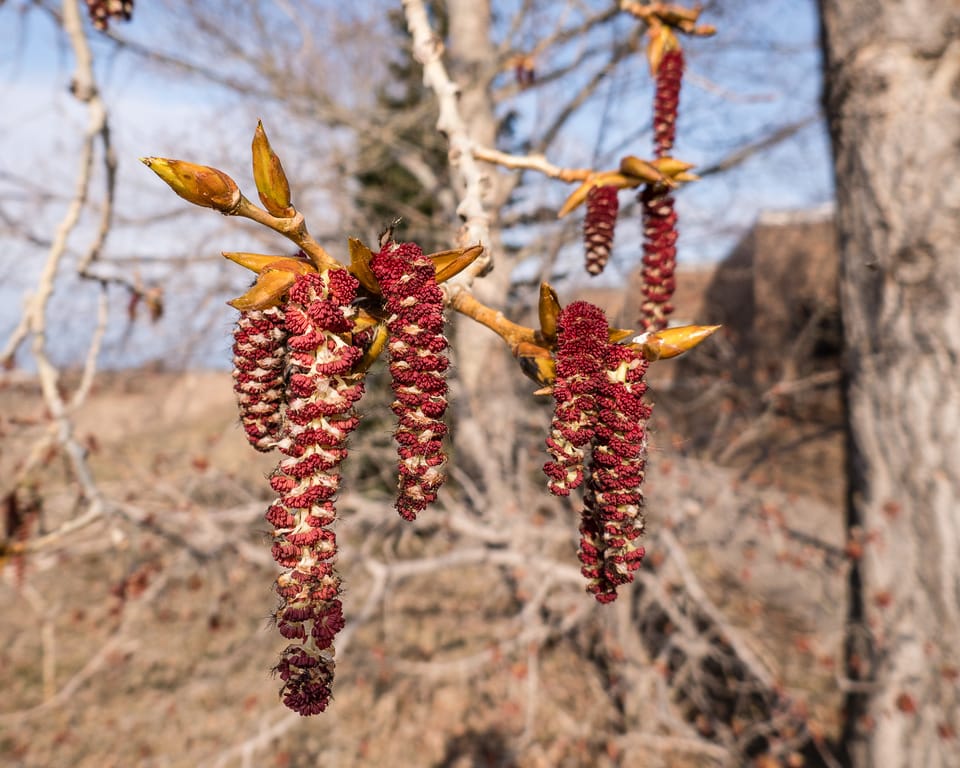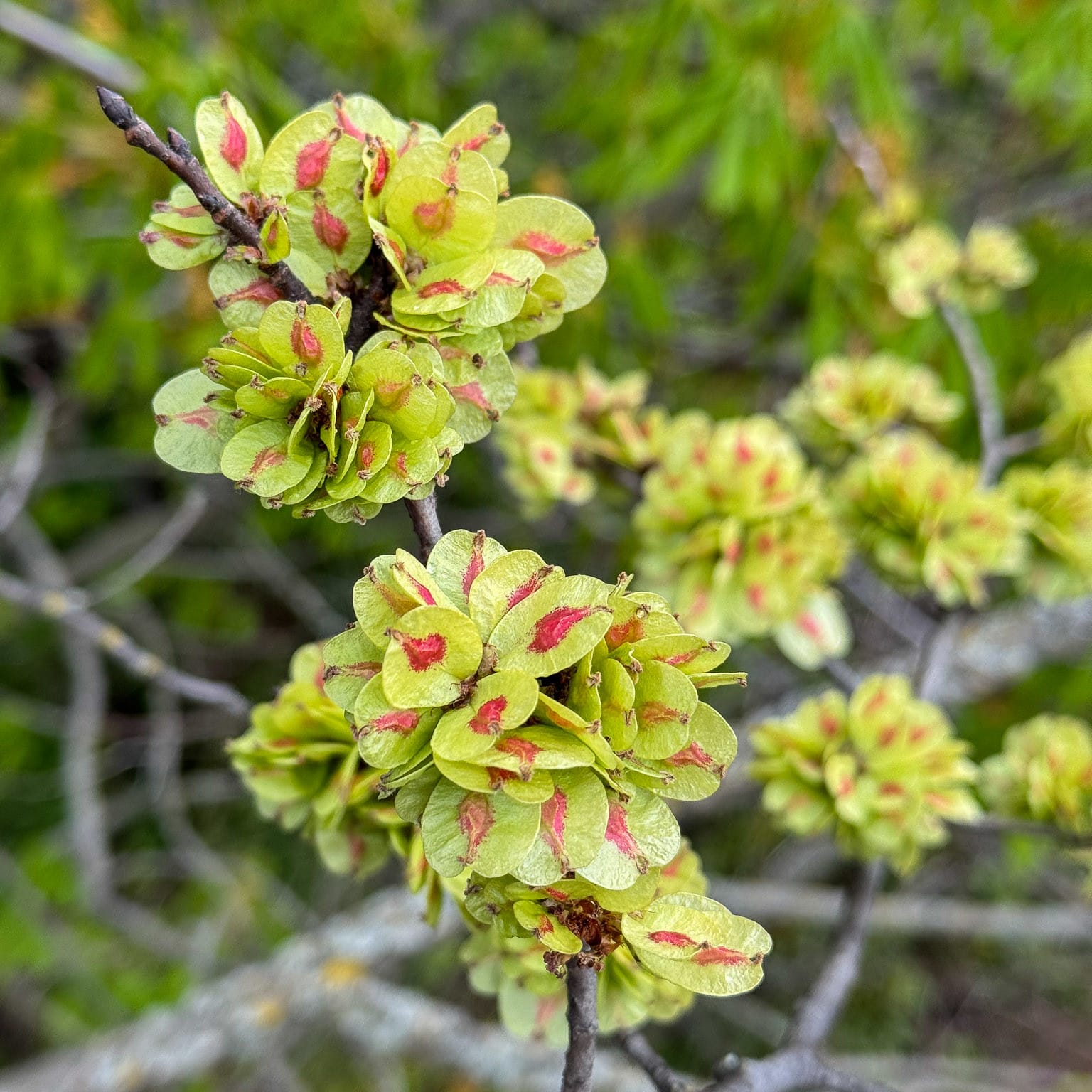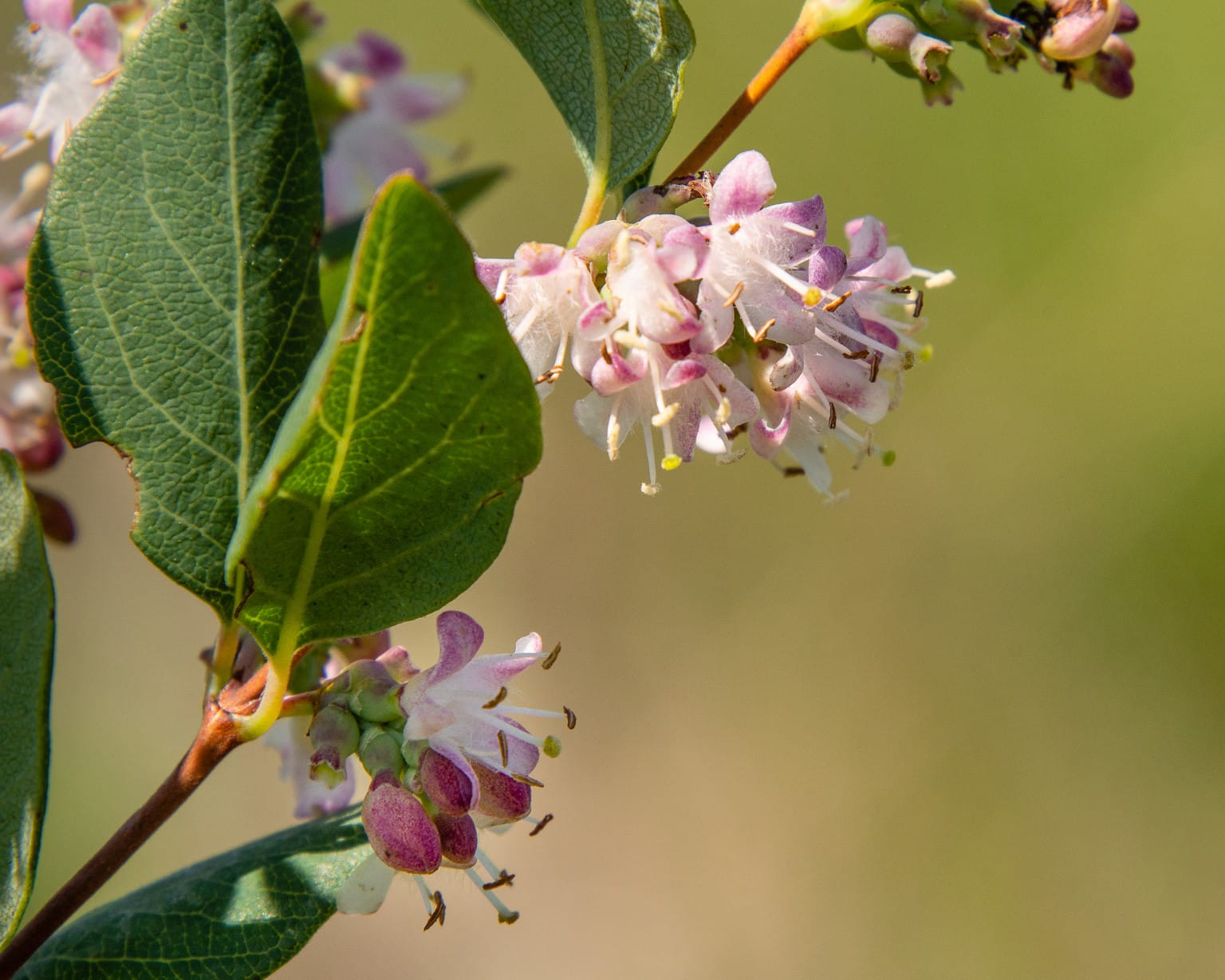Pollination & Seed Dispersal of Trees & Shrubs

Trees and shrubs use several different approaches to pollinate, spread their seeds, and increase their opportunities to propagate.
Blowing in the Wind
Have you ever walked down a street lined with cottonwoods in late spring and been surprised by the mounds of cottony fluff that have accumulated nearby? Cottonwood trees have both male and female catkins on the same tree. The pollinated female catkins mature and develop several seed capsules that split open releasing lots of small seeds attached to fluffy cotton-like strands. A single tree can produce up to 40 million seeds. Cottonwoods are fast-growing trees that grow well in wet conditions where they receive lots of sun. Their quick growth – up to 7 ft in a single year – creates brittle wood and branches will often break off in storms.
Like helicopter blades, the seeds of Manitoba maples (box elder) spin in the wind, carrying them further than they would otherwise. Both a male, pollen-producing tree and a female, egg-producing tree are required for pollination. Once pollination occurs, the eggs develop into two inward-facing wings that are attached at the base with each wing containing a single seed. The seeds are an important food source for many small animals and birds.

American elms produce drooping clusters of hairy reddish-green flowers with no petals as they are wind-pollinated in early spring. The seeds mature rapidly with a papery circular wing surrounding each seed. The seeds are numerous and very lightweight so are readily distributed by the wind.

With a Little Help from a Friend
Bur oaks are widespread in Canada, adapting better to a northern climate than other American oaks. Their thick corky bark can resist forest fires and their very deep roots make them drought-resistant. Bur oaks can live a long time. They don’t start producing seeds until they’re 35 and are most productive between 75 and 150 years. Bur oaks can’t self-pollinate so need to be close to another bur oak for wind pollination to occur. Each seed is enclosed in an acorn that is far too large and heavy to be dispersed by the wind. However, they’re a popular food source for many small mammals and birds who assist in their distribution.

Snowberry bushes have clusters of white, waxy berries that remain on the shrub and are easy to spot in winter. The clusters of small, pinkish-white, bell-shaped flowers are less conspicuous, but their nectar is popular with bees, hummingbirds, and insects. Once pollinated, the flowers develop into berries with two nutlets (seeds with a stony layer). You’ll often find clusters of snowberry bushes as they usually reproduce by sending out underground stems called rhizomes. Like many other berries, they only rarely reproduce from seed.
You’ll find more information about Western Canada’s trees and shrubs in Nature Companion, a free app/website introducing many of the plants and animals found in Canada's four western provinces.
Cover Photo: Cottonwood - https://www.flickr.com/photos/apmckinlay/25993523824,
EcoFriendly West informs and encourages initiatives that support Western Canada’s natural environment through its online publication and the Nature Companion website/app. Like us on Facebook, follow us on Twitter or Mastodon, or subscribe by email.

Member discussion